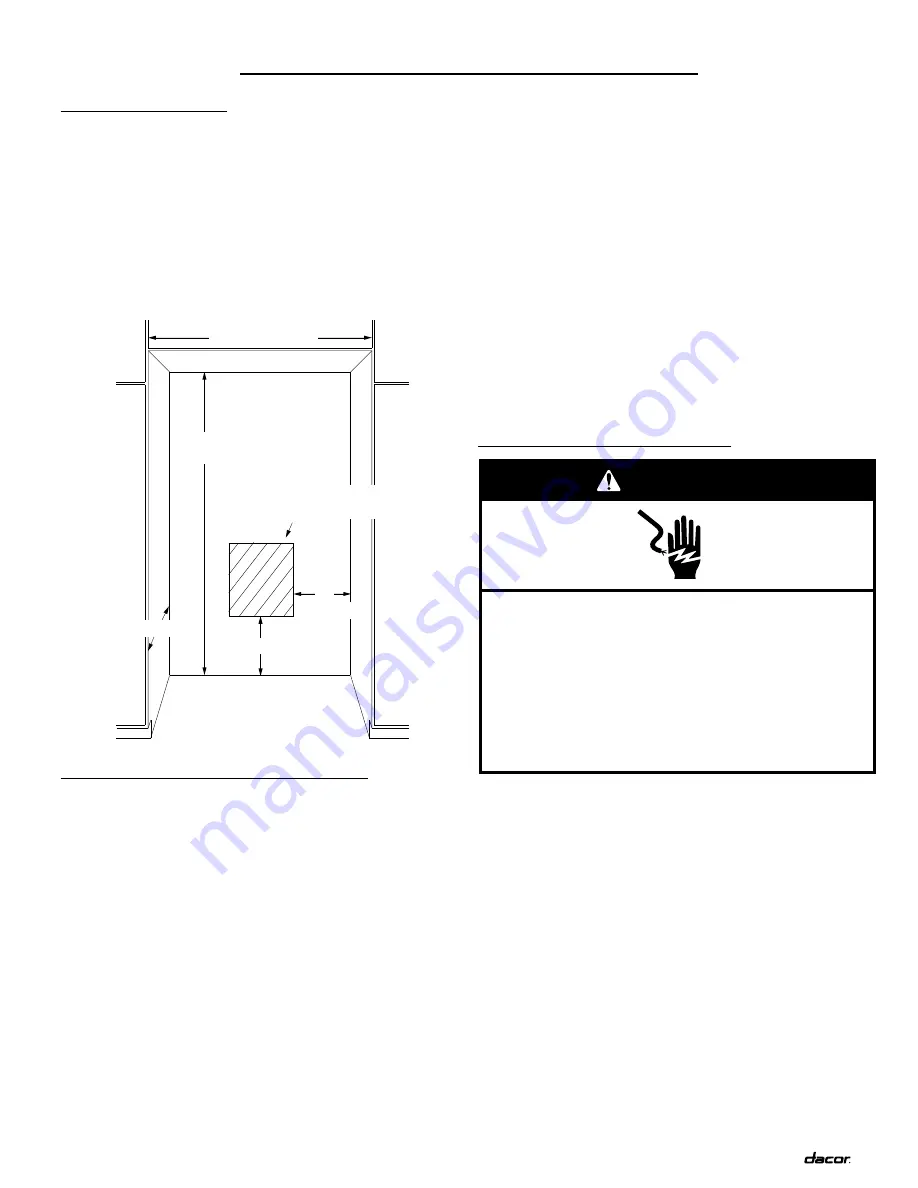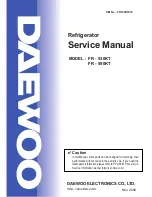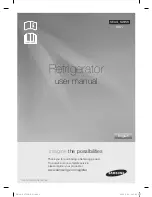
3
Cabinet Layout
Locate the refrigerator so that it may easily be pulled out from
•
the wall if service becomes necessary.
A grounded three prong non-GFCI electrical outlet must
•
be provided and should be in a location that allows the
refrigerator to be connected without an extension cord. See
Electrical Requirements
for additional information.
The plumbing for the water line can come through the floor
•
flush to or from the back wall. Install the water valve in a
location that allows it to be turned off without moving the
refrigerator out in the event the refrigerator or water line
requires service.
Water Supply Requirements
IMPORTANT:
All installations must meet local plumbing code requirements.
•
A cold water supply with water pressure of between 35 and
•
120 psi (241 and 827 kPa) is required to operate the water
dispenser and ice maker. If you have questions about your
water pressure, call a licensed, qualified plumber.
Install a shut off valve between the refrigerator and water
•
supply. Use 1/4” copper tubing with a compression nut and
compression sleeve and check for leaks. Allow a minimum of
24” (610 mm) diameter service loop of copper tubing outside
the wall or floor for easy connection to the water supply.
Install copper tubing only in areas where the household
temperatures will remain above freezing.
Do not use a piecing type or 3/16” (5 mm) saddle valve which
•
will reduce water flow and clog more easily.
If you have questions about your water pressure, call a licensed,
qualified plumber.
Installation Specifications
Reverse osmosis water supply
IMPORTANT:
The pressure of the water supply coming out of
a reverse osmosis system going to the water inlet valve of the
refrigerator needs to be between 35 and 120 psi (241 and 827
kPa).
If a reverse osmosis water filtration system is connected to your
cold water supply, the water pressure to the reverse osmosis
system needs to be a minimum of 40 to 60 psi (276 to 414 kPa).
If the water pressure to the reverse osmosis system is less than
40 to 60 psi (276 to 414 kPa):
Check to see whether the sediment filter in the reverse
•
osmosis system is blocked. Replace the filter if necessary.
Allow the storage tank on the reverse osmosis system to refill
•
after heavy usage.
If your refrigerator has a water filter, it may further reduce
•
the water pressure when used in conjunction with a reverse
osmosis system. Remove the water filter. See the use and
care manual.
Electrical Requirements
A 115 Volt, 60 Hz. AC only 15 or 20 Amp. fused, grounded
electrical supply is required. It is recommended that a separate
circuit serving only your refrigerator be provided. Use an outlet
that cannot be turned off by a switch. Do not use an extension
cord.
It is highly recommended that the electrical outlet be located so
that power may be disconnected without pulling the refrigerator
out from the wall.
NOTE:
Before performing any type of installation, cleaning, or
removing a light bulb, turn COOLING OFF, and then disconnect
the refrigerator from the electrical source. When you are finished,
reconnect the refrigerator to the electrical source and turn
COOLING ON. See the use and care manual.
Electrical Shock Hazard
Plug into a grounded 3 prong outlet.
Do not remove ground prong.
Do not use an adapter.
Do not use an extension cord.
Failure to follow these instructions can result in death,
fire, or electrical shock.
WARNING
70 ½” Min.*
(1791 mm)
36” Min. (914 mm)
*Add 2 1/2” (64 mm) for the optional top gril kit (AFG36).
Suggested electrical location
approximate dimensions
12” (305 mm)
24” (610 mm)
12”
(305 mm)






























